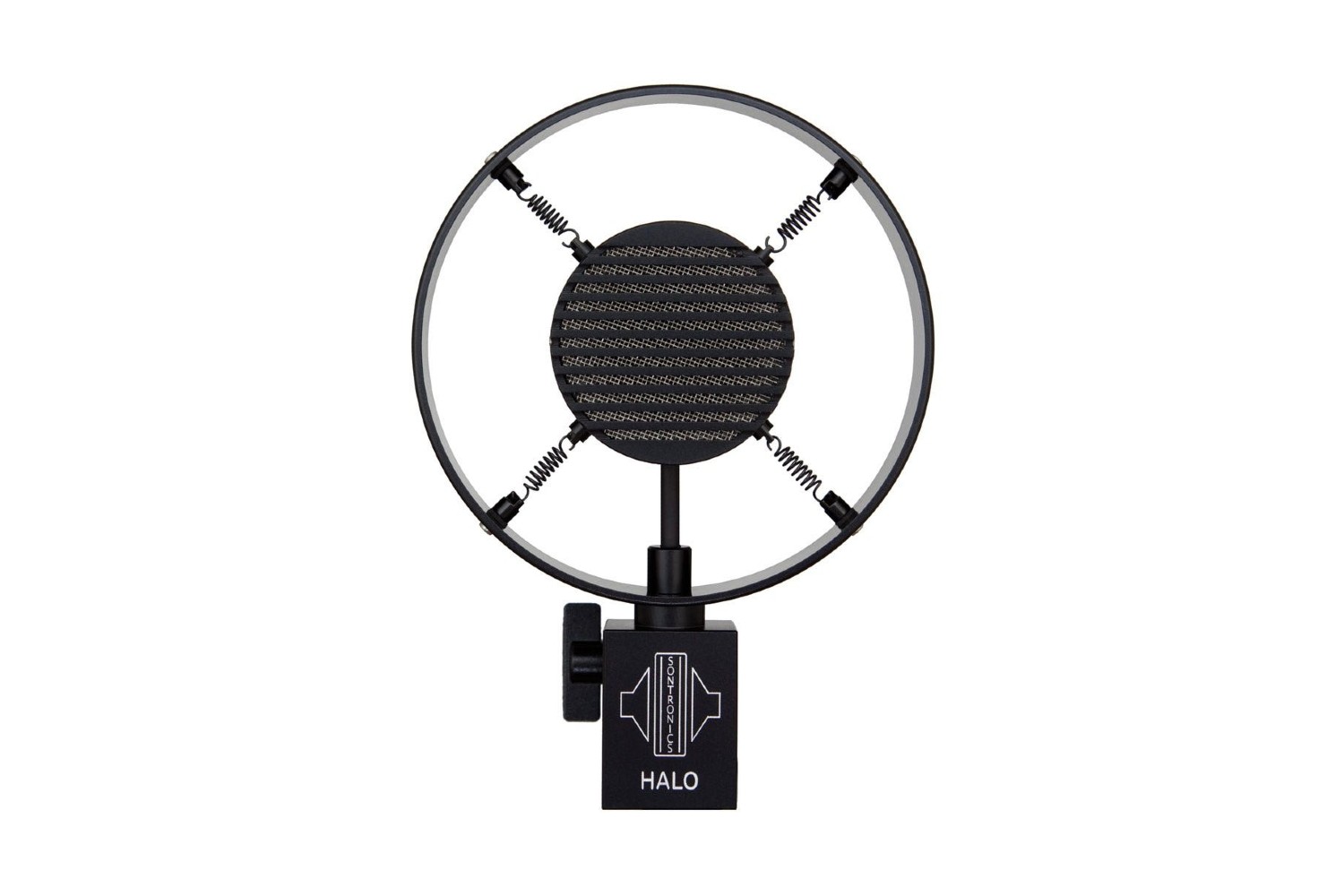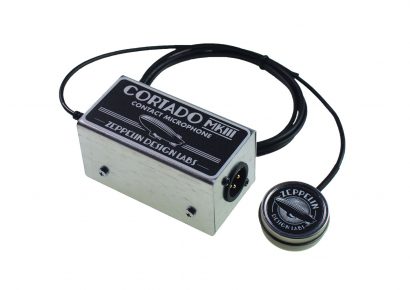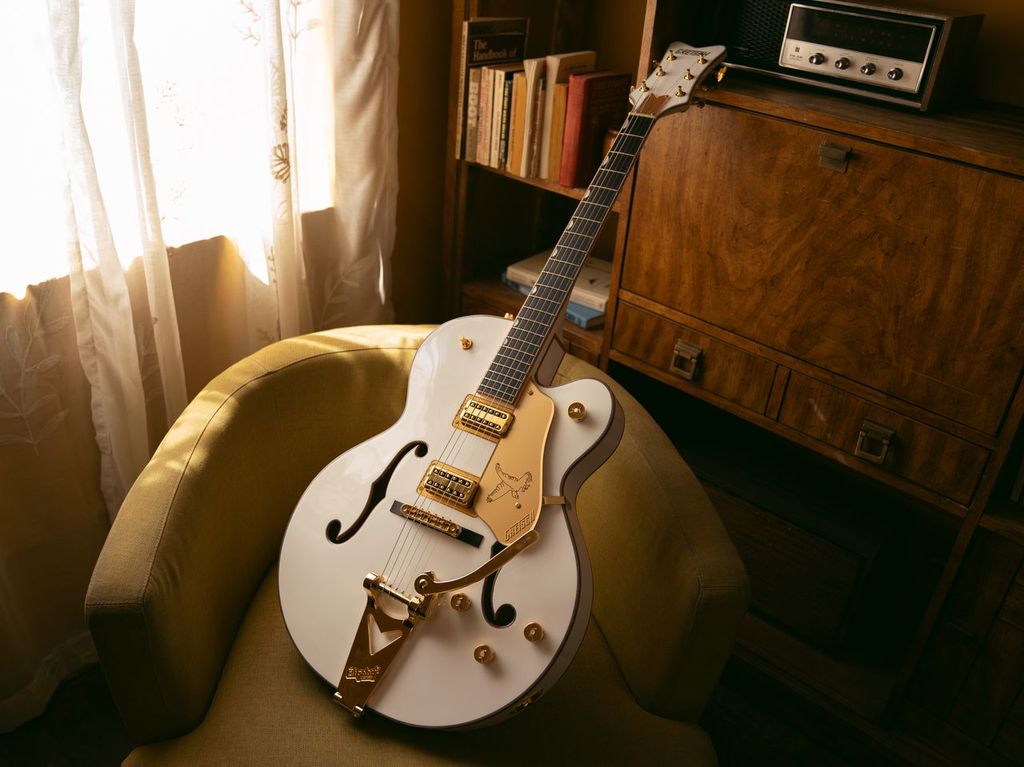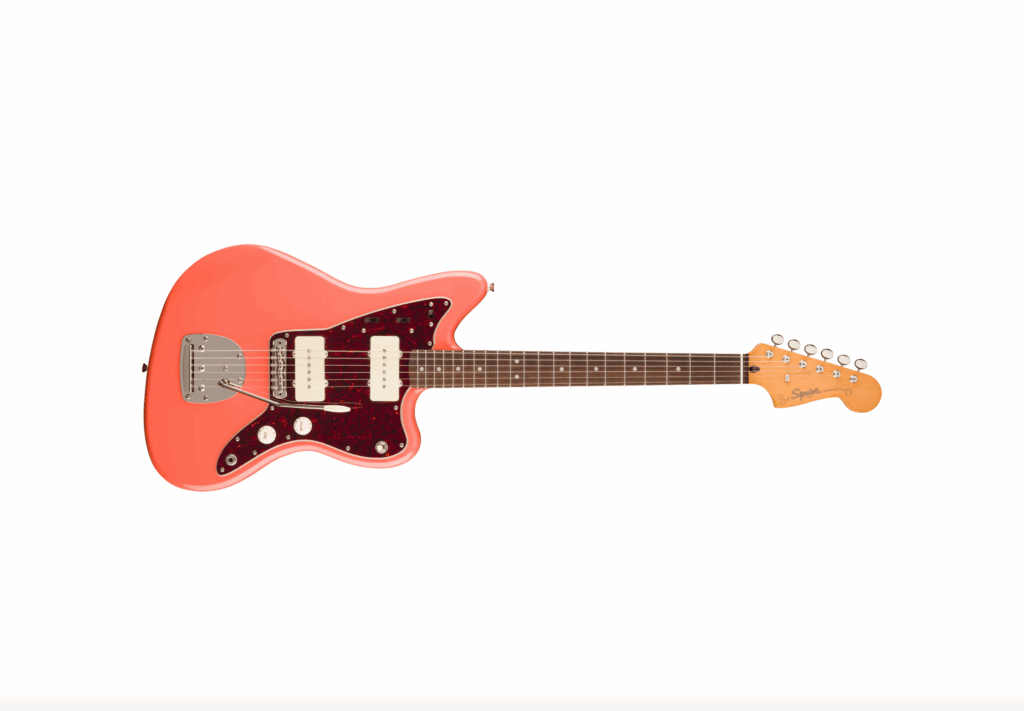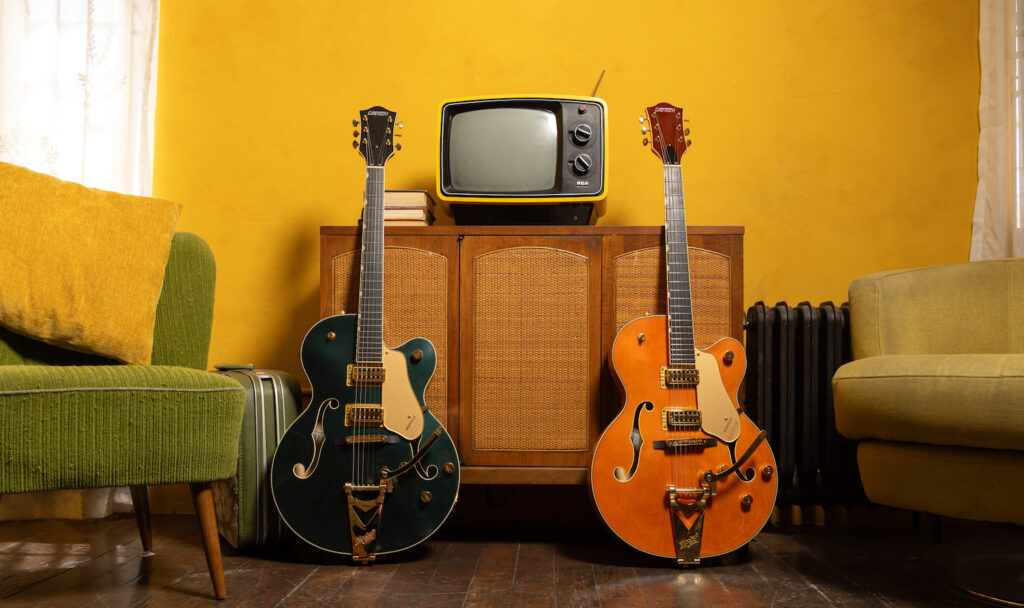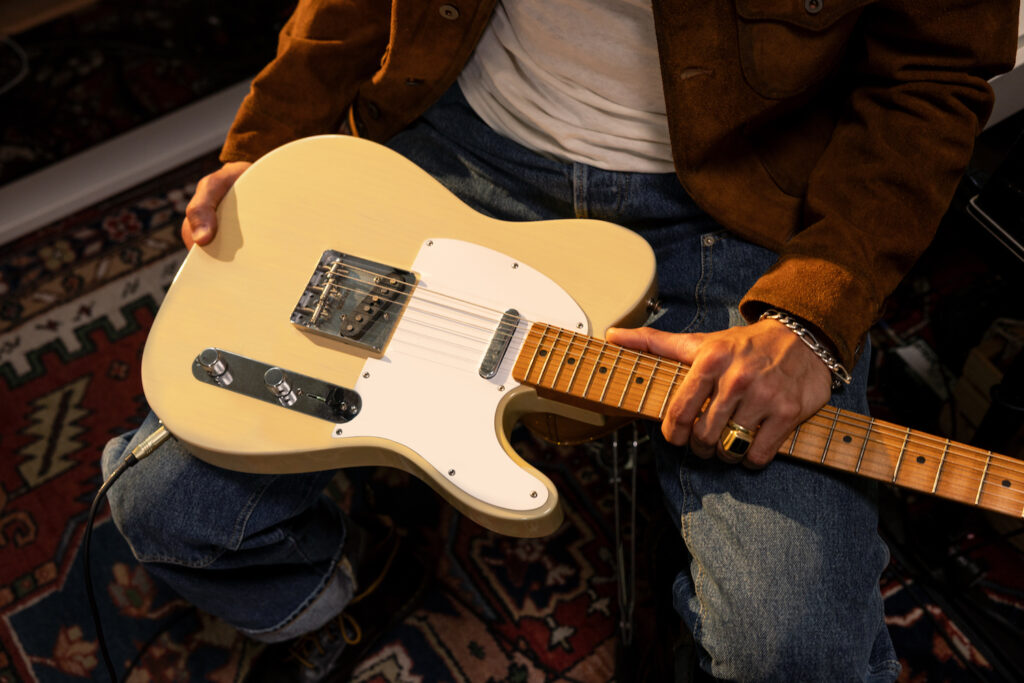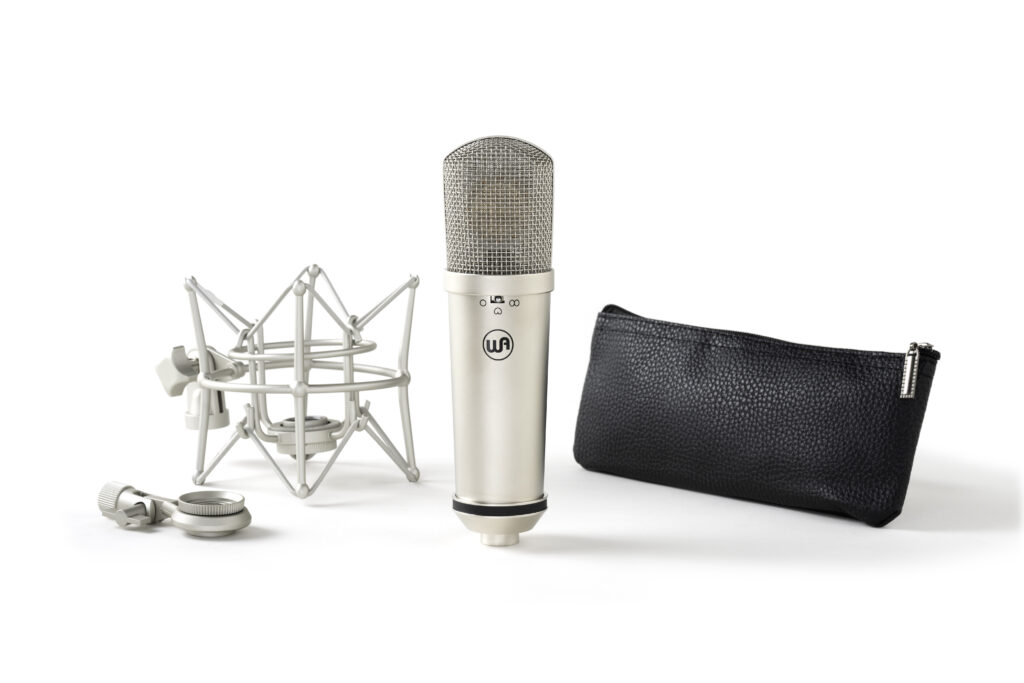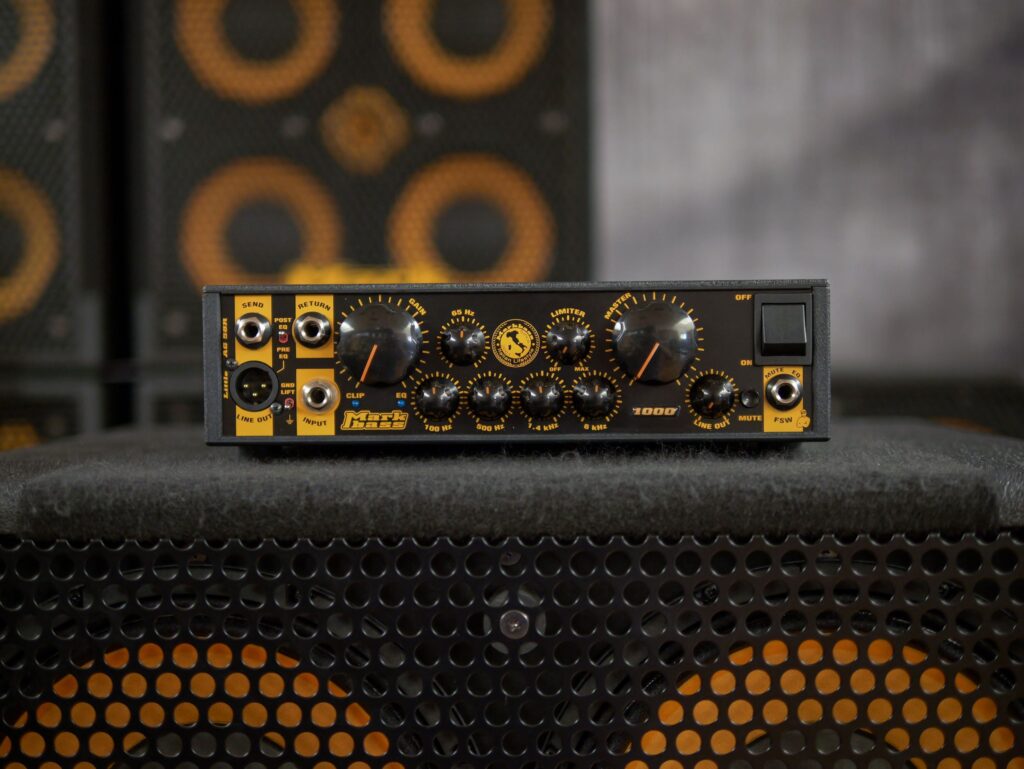Federal Audio | Expect to pay: A$399
Whether it be in the studio or live on stage, over the decades electric guitars have become very closely affiliated with a select few microphones and wisdom tells me those reading this review are familiar with the microphones of which I speak. So, whenever a new guitar microphone is picked up on the radar it certainly peaks interest and sparks some conversation.
Having recently had the opportunity to review the Sontronics DM-series drum mic pack (and being rather impressed I might add), I was obviously rather intrigued to see what the Halo mic had to offer.
Catch up on all the latest music gear reviews here.
Aesthetics certainly aren’t everything, but Sontronics absolutely cut the mustard when it comes to making microphones that look the part. The Halo is all vintage vibe and certainly commands attention. Its suspending hallowed design looks as though it’s been pulled back through a time machine sent back to the 1930s.
However, this supercardioid polar patterned dynamic certainly doesn’t sound like a vintage ribbon, but rather has an up front, detailed and nuanced sound character. How looks can be deceiving.
Its frequency response of 50Hz – 15kHz plays nicely for guitars as does its frequency graph, with a nice bump in the upper-mids starting at around 2kHz and rolling off around 9kHz, giving plenty of presence and bite, without getting brittle or unruly in the top end.
The gentle dip in the lower midrange helps with taming some of the unwanted gunk that lives here, that is typically subtracted with EQ. However, this isn’t at all the say that the Halo is all tops, I was pleasantly surprised with its low-end response too, but more on this in a bit.
I firstly put up the Halo next to my trusted SM57, both mics on-axis, a centimetre or two either side of the cone of a Fender Hot Rod Deluxe 1×12”. Both mics were recorded flat into UAD Apollo Twin preamps, no EQ or compression.
Plugging in a Fender Strat to start, I found the Halo to capture the distinct single-coil tone from the Strat quite nicely, with a touch more top end than what I’m used to with the response of an SM57.
What struck me upon listening back was the aforementioned scoop of the Halo in the low-mids, giving a distinctly “EQ’d” sound which I developed more of a fondness for as I became more acquainted with the mic.
The Fender Jazzmaster was up next, giving a rounded bottom end compared to that of the Strat. This allowed me to have a clearer picture of how the Halo would cope with more bottom end thrown at it, as well as pushing the amp a little harder.
To my surprise, the Halo faired very well indeed and to my ears (with a spectrum analyser confirming this) had a healthy dose of 100Hz – 150Hz in the bottom end. With the SM57 sporting a 800Hz – 1kHz dominance in its tonality, the Halo had a full bottom end and balanced upper-midrange clarity, not requiring much EQ or compression to get it sitting nicely in the mix.
What I really wanted to check out was how the Halo paired with a ribbon, and based on what my ears had told me so far I was expecting a positive result. They certainly did make a good match, with the ribbon bulking up some more of the bottom end (as to be expected) and filling in some more of the midrange.
Turning the Halo off-axis facing towards the centre of the cone revealed yet more of its character, giving some extra bark, spank and attack. Perhaps a little too much for my ears on its own, but when tucked in with the ribbon worked quite nicely.
Sontronics have made a bold plunge into the depths of guitar amp microphones with the Halo, competing with classic mics that have dominated this arena for decades. Thankfully, it absolutely holds its own and is a sure contender for engineers looking to refresh their existing collection or those starting to fit out their mic locker.
The tonality straight off the bat is pleasing and you can see why Sontronic say “no EQ required” with such confidence, it really does sit and balance well. Whilst it certainly paired great with a ribbon, if given only one mic I’d happily take the Halo on its own, and when placed in just the right spot, really captures an amp singing.
Whilst I didn’t have the chance to put it in front of other sound sources, based on what I heard, I can imagine Halo playing very nicely with snare drums and even vocals, making it a little more versatile than one might expect. Its vintage styling is tasteful yet robust and the included guitar pick was an unexpected bonus. Cheers legends!
Head to Sontronics for more information on this mic and for local enquiries, get in touch with Federal Audio.
